#walkability
Text

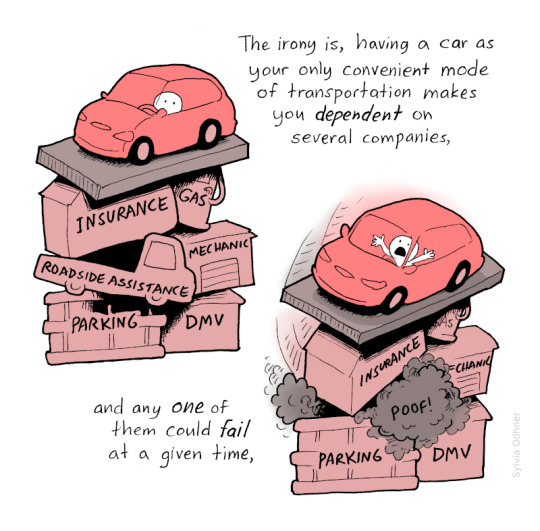
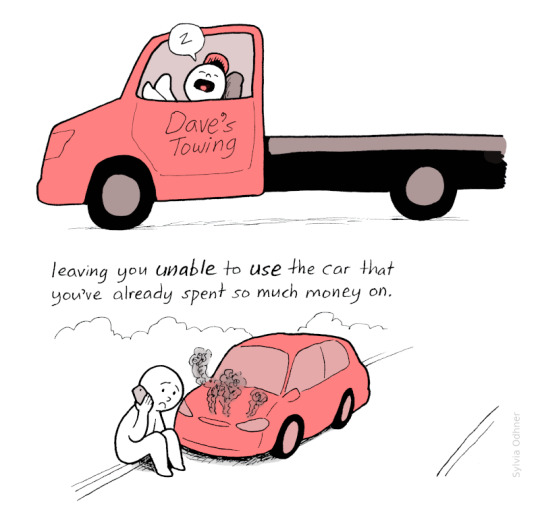

Cars and Independence
My Patreon
Update: This comic has received a lot of both positive and negative attention, and I decided to post a follow-up comic to address some of the criticism: Revisiting Independence
21K notes
·
View notes
Text

car culture is so fucking annoying.
#fixingbadposts#fixing-bad-posts#blackout poetry#walkable cities#walkability#city planning#urban planning#urban design#miscellaneous
3K notes
·
View notes
Text
The thing about car-dependency is that... it sucks for people without a car. Big news, right. But, it’s not like that incentive curve is something we can just ignore. When our desire or ability to leave our house at all is conditional on being in a car, that affects all of our behaviour on every level.
Kids are the prototypical ‘person without a car’, and in a car-dependent area, they become dependent on their parents. In a normal, walkable city or suburb, children walk on their own to school, they cycle, they take the bus. Instead of needing to get parental approval - and enough enthusiasm to dedicate the time - to be shuttled around to any given activity, children walk to the park, or to a friend’s house. Even in rural areas, with the infrastructure, children will cycle to school. In a car-dependent suburb, a child is trapped in a single-family McMansion on the edge of town, forced to beg their parents to be able to go anywhere, always under supervision - is it any wonder they’d rather stay inside?
Even in a city, if it’s car-dependent, this is still an issue. When the roads are 100-decibel, 6-lane monstrosities, with cyclists expected to intermingle with traffic, and the busses stuck in the exact same jam, kids aren’t going to be able to get anywhere, assuming their parents even let them cross the street. This isn’t just about proximity, it’s fundamentally related to safety. Car-dependent places are a lot more dangerous to be in, on account of all the cars, so parents feel it’s safer for their kid to be in one of those cars. To boot, when everyone’s in a car, there are less people around, less people who can notice someone in trouble, less people who can help. When places are built with the assumption that everyone will have a car, they become places for cars, which humans can stupidly venture into.
This doesn’t just apply to children. We are all, at some point or another, a ‘person without a car’ - in fact, we’re a ‘person without a car’ most of the time, until we get into one. A lot of people would prefer to remain that way; driving a car is stressful, it takes a lot of effort and concentration, and not everyone likes it at 6AM. But, when your environment is built with the assumption you’re inside a soundproof, crash-proof metal box, that becomes a requirement. The second you’re outside of those conditions, scurrying across deafening, hot tarmac, and dodging heavy-duty pickup trucks (carrying solely one guy and his starbucks order), of course you’d decide that not being in a car sucks. But, the thing is, it’s designing for cars that made it suck, even for the car-drivers.
A place designed for cars, a place that people cannot walk, or cycle, or take public transit through, is a place full of cars - you are not stuck in traffic, you are traffic. Studies have shown that the average speed of car traffic, over sufficient time, is completely unrelated to the thoroughfare of roads. Eventually, because of induced demand, the new seven-lane arterial road will have exactly the same congestion as the two-lane it replaced. The one factor that sharply determines how slow road traffic gets is, listen to this, the speed of non-car travel. It is solely when alternatives become faster that people stop driving and free up traffic. Shutting down main street, only allowing buses through, would drastically increase the speed of the rest of the road network - because each of those buses is 40 cars not in traffic. If you like driving, you should want as many people as possible who don’t want to drive to stop doing it - and whoever you are, you should want to be able to travel without depending on cars.
When I was in the biggest depressive slump of my life, and I could barely get out of bed, I still went shopping for food nearly every day, and even traveled to visit my partner. The supermarket was 10 meters out the door of my apartment, and I could walk five minutes to either train station if I had to. It was peaceful and quiet outside. My disabled mother doesn’t like living in cities, but she loves public transit, and will always take a train ride over a long, tiring car journey - and when every store doesn’t need a parking lot twice as big as itself, whatever walking she does have to do is over a much shorter distance. When I’ve had to call an ambulance in a ‘car-hostile’ place, it has arrived inconceivably faster, on those clear roads, than when sitting in the traffic of the highway-lined carpark that makes up so many cities.
Car dependency sucks for everyone, including car drivers, but it sucks the worst for people already suffering. It strips you of independence, and forces you into a box you might not fit in - and I haven’t even touched on pollution. Car-dependency makes cities and suburbs into dangerous, stressful places, devoid of everyone except the most desperate. The only people it benefits are, really, the CEOs of car companies.
38K notes
·
View notes
Text
Car "based" infostructure? Actually, it seems pretty cringe to me.
448 notes
·
View notes
Text
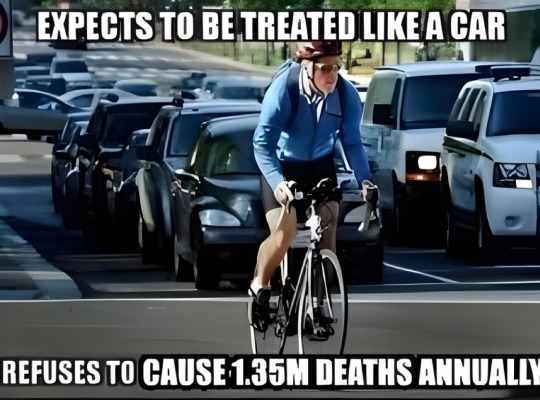
419 notes
·
View notes
Text
Bland buildings are less offensive when they're part of an overall great urbanism
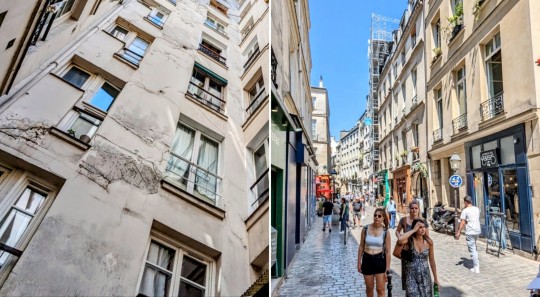
Something occurred to me while walking around Paris last week during a vacation visit...
If you zoom in on average Paris buildings, many resemble the apartments that often get pegged as being "cookie cutter, soulless density" in Atlanta. They may not be exactly as bland as the worst offenders in Atlanta, but they can be pretty dull in themselves, relative to the grandest architecture in the city.
But when you zoom out to their full context, to see how they're grouped closely together against pedestrian-focused streets, with shops on bottom, they look glorious.
This is the physical aspect of good urbanism that matters so much.
It's about creating public streets scaled primarily toward the movement of humans, and less toward the movement and parking of cars.
It's about streets where many things are in walkable distance, and where the doors and windows of buildings are politely close to pedestrians instead of being set back behind unused landscaping or parking spaces (though if I was rebuilding Paris, I'd definitely leave some room for more street trees).
Of course, individual buildings that are set back from the street in less pedestrian-oriented formats can be beautiful and beloved in themselves.
But in terms of scaling large populations upward in a way that sustains walking (versus car dependency), prioritizing compact density is important. And in the process, bland architecture is more forgivable because the aesthetic of the larger place is what's most important.
It's a challenging argument to make because I realize that Atlanta's dullest architecture is much more offensive than the bottom rung of what you find in Paris.
But in a classic European city where there's a lot of really grand, elegant, detailed architecture (much more so than what we have in Atlanta), the ones I posted here count as what I'll call "bland background buildings" by comparison.
It's only when you crop it specifically into pieces that you can see "oh, this building doesn't particularly stand out in terms of architectural details, but the entirety of the street is gorgeous anyway," and that's because of the overall structural urbanism happening.
I think there's a lesson for Atlanta in that. Yes, there's value in improving some details of our dull architecture. But the most important improvement in our design needs to happen at the level of streets and neighborhoods.
#paris#urbanism#architecture#urbanisme#walkability#urban planning#urban design#city design#walkable cities#human scale cities
174 notes
·
View notes
Text
Modular cottage designed to be cute

Why do factory-built houses tend to look ugly? Why can’t they be cute, like a cottage that would fit into a walkable neighborhood? New urbanists have been wrestling with that question for many years.
Bruce Tolar, an architect based in Ocean Springs, Mississippi, asks: “Would you rather have a little manufactured house with the wrong-sloped roof and no porch, or would you like one that's very similar in square footage but has a great roof and a little bit of nice detailing on the porch?”
The assumption is that many home buyers would prefer the attractive cottage, and such a modular house recently won an Urban Guild Award. Built in the Franklin Homes factory in North Alabama, the house prototype was placed in Tolar’s development of cottages in Ocean Springs, Mississippi. “We have a tenant who’s very happy with it,” he says. “Now that we’ve done it, we can do it again under the right conditions. We hope to make that happen.”
Read more.
#urbanism#new urbanism#walkability#walkable cities#cute#cottage#cottage aesthetic#urban guild#modular#housing
225 notes
·
View notes
Text
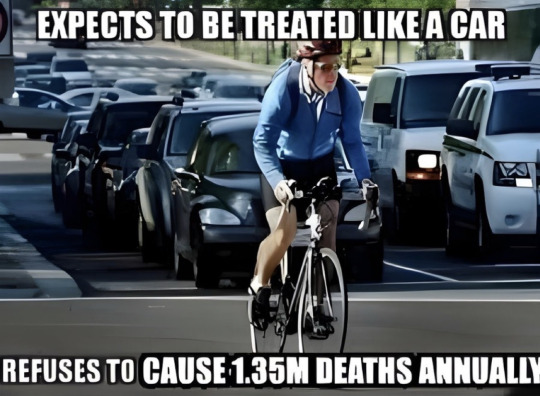
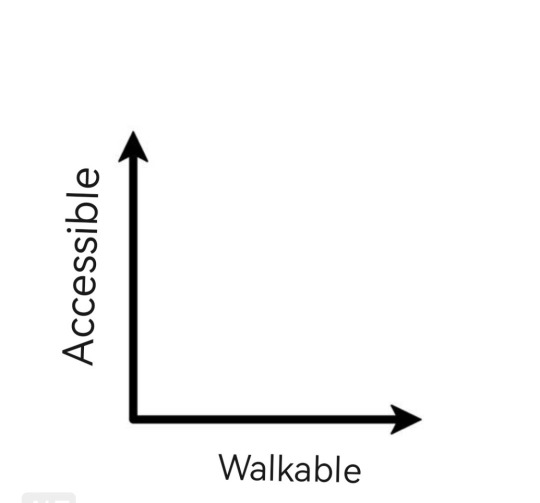
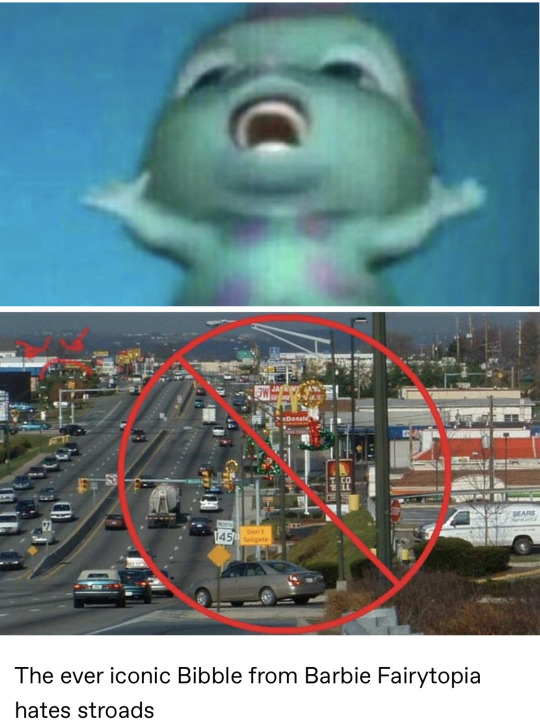
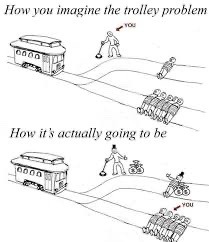

In my opinion era
61 notes
·
View notes
Text
Pedestrian bridge? I find it quite remarkable.
18 notes
·
View notes
Text

Most average life of a north american urbanist (me)
#urbanism#strong towns#urban planning#infrastructure#walkable cities#walkability#urban sprawl#cars suck
49 notes
·
View notes
Text

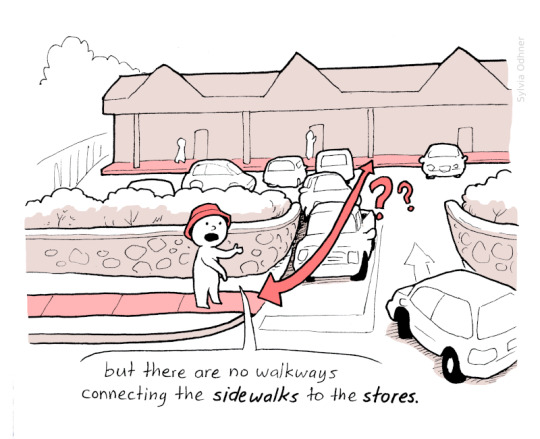
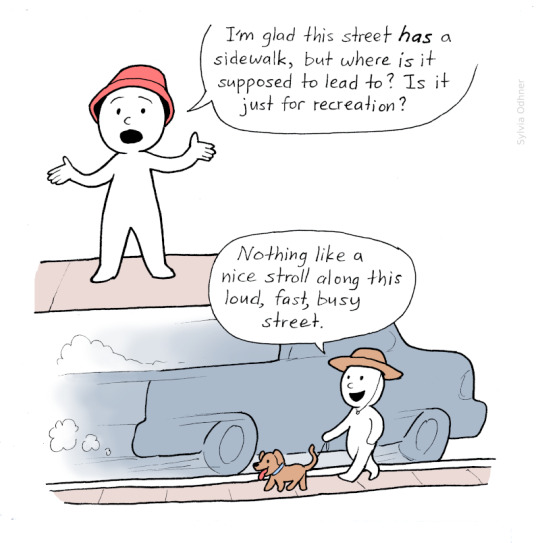
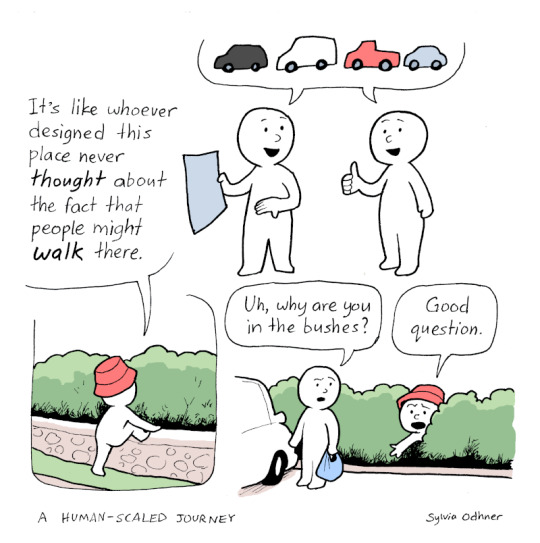
The Shopping Center Disconnect
29K notes
·
View notes
Text
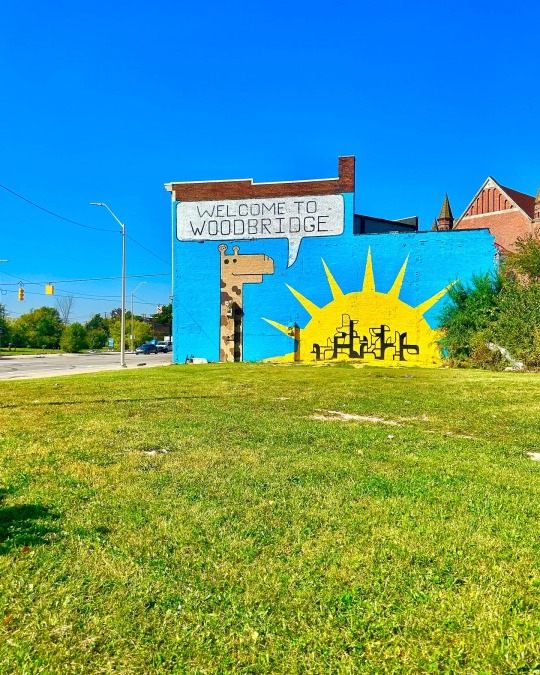

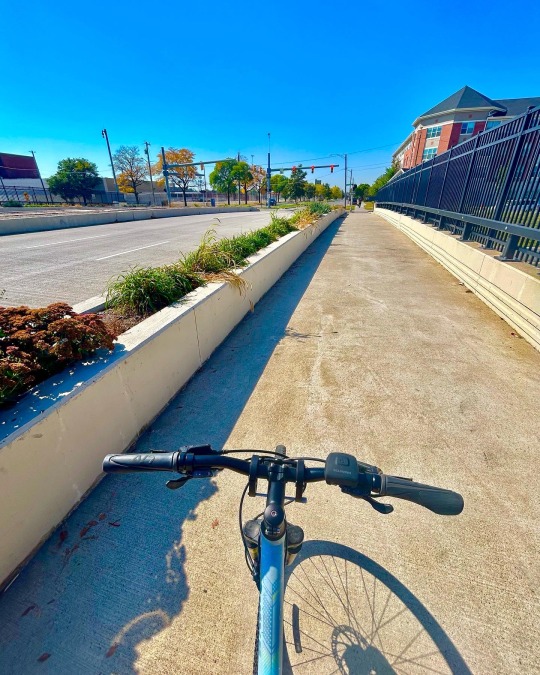


A little ride from Midtown to Woodbridge via MLK. 🚲 10/3/2023
#Woodbridge#woodbridge detroit#walkingdetroit#detroit#carfree#streetart#mural#welcome to woodbridge#midtowndetroit#midtown#what will you fight for?#safer streets#walkability
38 notes
·
View notes
Text

[Image description: A tumblr text post, edited blackout-poetry style to read, "take cars away they restrict your freedom of movement."]
---
take cars away they restrict your freedom of movement
#good god i hate car-centric cities so fucking much#fixingbadposts#fixing-bad-posts#blackout poetry#i hate cars#city planning#infrastructure#walkable cities#walkability#cars
499 notes
·
View notes
Text
Livable Streets in China

In 2019, there were almost one billion passenger-trips on public transit in the US. This is roughly the same number as that of Tianjin, a city in China with only 13 million people. China as a whole has more than this, the USA's total yearly number of passenger-trips, every single day. Evidently, when it comes to transit infrastructure, China's doing something right.
I'll note that I'm only talking about urban transit, here - China's vast high-speed railway network is already well discussed, and fills a space occupied, in the US, by domestic airline flights. When it comes to urban public transport, China is king. China has the longest metro system in the world, in Shanghai, with 400 stations and 800 kilometers of track. China also has the second, third, fourth, fifth, and sixth longest metro systems - in fact, the only metro system in the top ten not in China is the Moscow Metro, built by the USSR - and half the size of Shanghai's.
Still, there's room for improvement! The Central Urban Work Conference convened in 2015, the first since the beginning of opening up, marked a paradigm shift in urban design. China's qualitative change, from a rural to an urban country, is a recent transition, and it takes time for its effects to equalise. Before discussing the most advanced leaders of China's urban drive towards livable streets - which are literally tearing up highways to build parks instead - it might be useful to get a broader view.

The city of Zhuzhou, in Hunan province, is a small, third-tier city of only a million people. Being a third-tier city, its situation is different from the first- and second-tier cities, who developed, and have been strongly introduced to, new urban design paradigms. The city's rapid motorisation impacted the vitality of its urban centre, deterring street-front social interaction and general livability. The city government considered this a large issue, and began moving funds away from highways and road expansions, and towards the renovation of smaller streets. Now, for context, in this scenario of unchecked motorisation, 78% of Zhuzhou's residents still travel by walking, cycling, and taking public transit.
When it came to Zhuzhou's approach to these issues, it was one that comprised of many approaches touted internationally. Streets are thinned, and given chicanes to reduce car speed. Drivers are able to see their speed more clearly on thinner streets, and, psychologically, feel unsafe driving at high speeds. Sharp corners and dog-legs are built onto streets, to physically ensure slower speeds, especially at intersections and crossings. Slip lanes are removed, and islands are added to pedestrian crosswalks. Pedestrian crossings, rather than dipping down into the street, remain level, physically forcing cars to slow down as they make their way up, like a speed bump, and enforcing the perception that the cars are infringing into a pedestrian space.

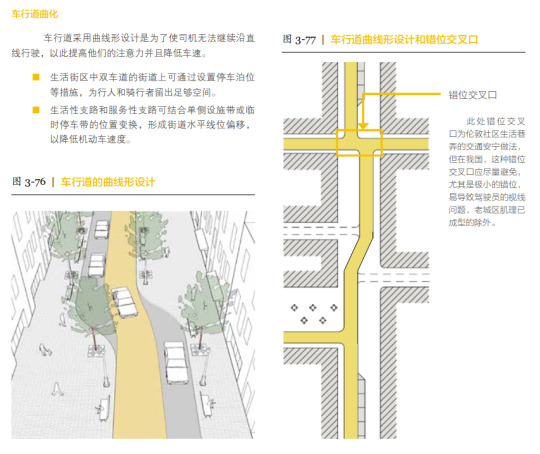
Some approaches were more unique, and integrated building design. Part of the city's design manual focused on the somewhat-common but less discussed feature, of aspect ratio - the vertical height of buildings for a given horizontal space, important for avoiding the depressing, flat expanses of tarmac that make up US sprawl. Another focused on the integration of pedestrian overpasses and underpasses into buildings, and the enforcement of building overhangs and arcades that provide a sheltered space.

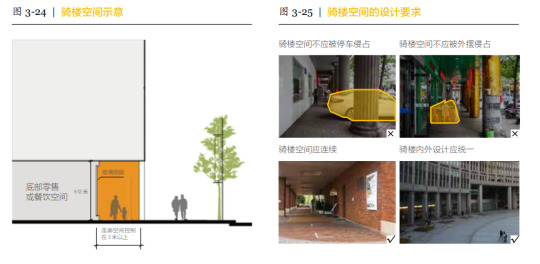
These are the changes put into motion in third-tier cities, meeting and exceeding the beacons of urban design often presented in the west. When it comes to first-tier cities like Shanghai, the award-winning Shanghai Street Design Guidelines are realising advanced, human-centred urban design for greater numbers of people than ever before.
871 notes
·
View notes
Text
So far, the only even remotely coherent arguments I've seen against prioritizing walkability in city design are:
Do you trust city councils to implement this? (You seem to trust them with the current zoning allowance)
They're gonna ban cars! (No they fucking wont and you know this)
I dunno, it's just, it's different, different is scary it must be bad! (Please seek therapy)
Some especially disingenuous people may claim walkable cities are "ableist/bad for disabled people" but it's never actually disabled people making that argument, it's just an extension of the "they're gonna ban cars" argument (claiming that disabled people need cars to get around), and also ignores how dangerous car centric city design is for disabled people, lots of streets don't even have sidewalks and you frequently have to cross 5+ lanes of traffic to cross the street which includes having to go down and up two ramps.
The only people walkable cities are bad for are Jennifer, Mike, David, Amy, and Kimberly and their giant pedestrian killing land yacht SUVs and Pickup Trucks, and, good, fuck em.
23 notes
·
View notes
Text

15 notes
·
View notes